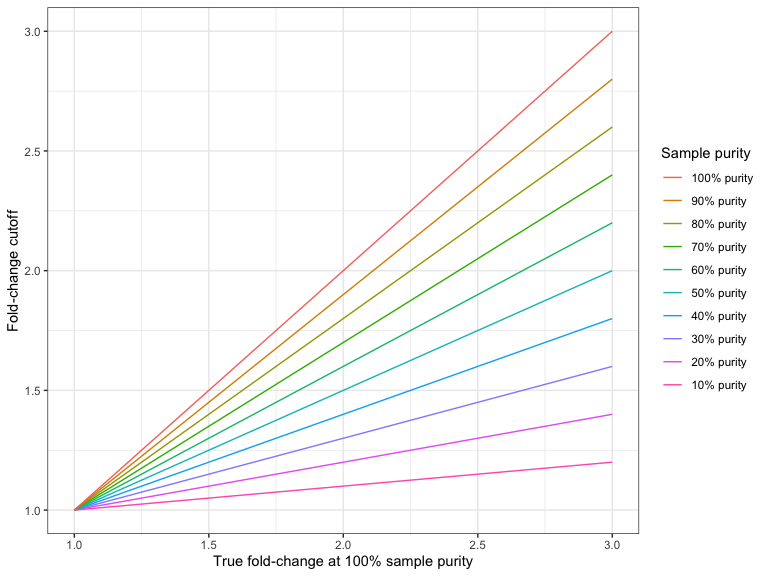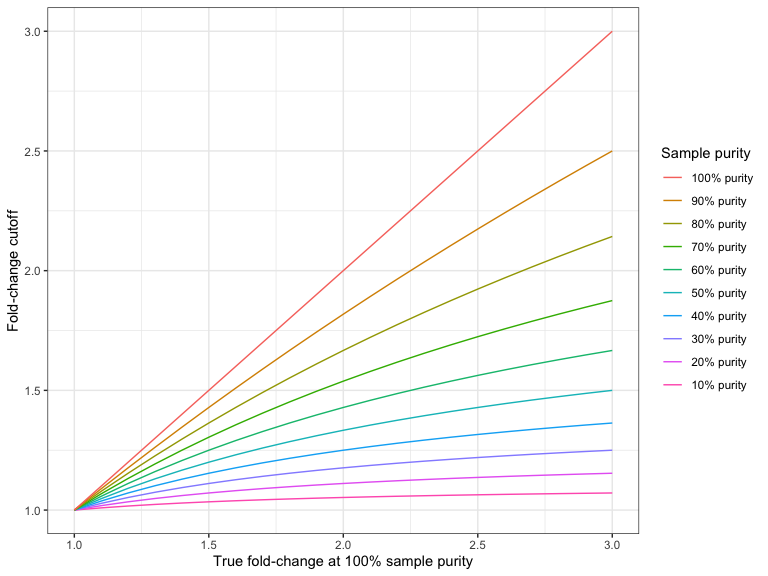How to set the fold-change cutoff when the sample purity is not 100%
Given a sample purity of ![]() %, and a desired detection level (absolute value of fold-change in 100% pure sample) of
%, and a desired detection level (absolute value of fold-change in 100% pure sample) of ![]() , the following formula gives the required fold-change cutoff for an amplification:
, the following formula gives the required fold-change cutoff for an amplification:
For example, if the sample purity is 40%, and you want to detect 6-fold amplifications (e.g. 12 copies instead of 2), then the cutoff should be:
The following formula gives the required fold-change cutoff for a deletion:
For example, if the sample purity is 40%, and you want to detect a 2-fold deletions (e.g. 1 copy instead of 2), then the cutoff should be:
Figure 31.25 and Figure 31.26 shows the required fold-change cutoffs in order to detect a particular degree of amplification or deletion respectively at different sample purities.

Figure 31.25: The required fold-change cutoff to detect amplifications of different magnitudes as a function of sample purity.

Figure 31.26: The required fold-change cutoff to detect deletions of different magnitudes as a function of sample purity.
The Copy Number Variant Detection (Targeted) tool calls CNVs that are both global outliers on the target-level, and locally consistent on the region-level. The tool produces several outputs, which are described below.
